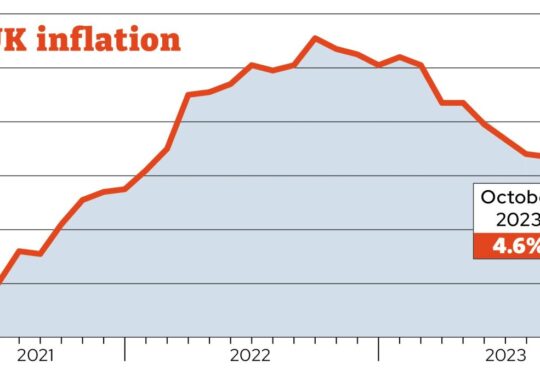
With liquidity rising up insurers’ agendas in Europe and elsewhere, Lauri Saraste sets out his standard for assessing the risk.
Liquidity risk for insurers has been making the headlines during the past year. Insurers have survived historical liquidity crises such as the 2008 financial crisis and even periods of the Covid pandemic remarkably well, partly because their business model tends to create positive liquidity. This, together with generally stable or predictable liabilities and a great deal of flexibility, reduces the need for the forced selling of assets.
However, we recently saw the liquidity crisis affecting some liability-driven investment pension funds, insurers that use interest rate hedges on a large scale, and some European and US banks and insurers, such as Italian life insurer Eurovita. These crises were triggered by different things, but the common root cause was the rising interest rate environment following a long period of low yields.
Recognising the issue
During Europe’s period of negative interest rates, insurers became increasingly interested in investing more into illiquid assets to hunt for better yields. This allocation to illiquid assets, insurers’ hedging activities and the design of certain savings products steered regulators and supervisors towards better recognising the potential liquidity risk for insurance companies. Supervisors such as the European Insurance and Occupational Pensions Authority (EIOPA) and the International Association of Insurance Supervisors have been active in raising liquidity risk as something insurers should better monitor and report on, and asking whether this justifies additional capital requirements.
Liquidity stress was a key assessment in EIOPA’s 2021 insurance stress test. The results showed the EU insurance sector surviving very well in the following scenarios:
- Under the base case, insurers had positive liquidity of €80bn (so no need of any liquid assets) and liquid assets of €2.8trn
- Under the very extreme stress test, the positive liquidity position moved to a negative liquidity position of €10bn, but insurers still had liquid assets of €2.2trn available to cover this small need.
Assessing liquidity risk
Liquidity should be measured alongside solvency, as the two measures answer different questions. While Solvency II does not explicitly require the holding of capital against liquidity risk, it does create several requirements for insurers regarding it. For instance, the lapse risk sub-module requires them to have, on an ongoing basis, enough assets to cover extremely large withdrawals, and the assumed lapse shocks are high compared with banks’ liquidity stress tests (20% of customer withdrawals).
Assessing insurers’ liquidity risk needs some work. Importantly, the results need to be clear, communicable and understandable. I suggest a full balance sheet approach when assessing the potential liquidity risk under different stressed situations. In particular, insurers need to understand:
- How vanishing market liquidity impacts their asset allocation with possible haircuts
- What potential changes could be made to policy cashflows, such as withdrawals and lower premium payments, under a stressed scenario
- Which off-balance sheet commitments might require payment for various reasons.
This should be considered against different timeframes (intraday, week, month, and so on). This idea was introduced in 2019 via work carried out by EIOPA’s Insurance and Reinsurance Stakeholder Group (IRSG). The discussion continued into the spring, for instance with the European Systemic Risk Board (ESRB), at the Insurance Asset Risk EMEA conference and at the 2023 International Congress of Actuaries.
When assessing liquidity risk, I suggest using the following steps:
1. Take a total balance sheet approach
For insurers, liquidity risk is not just about asset allocation; it is also crucial for understanding insurance contracts at a robust level of detail, such as policyholder options to lapse and insurers’ options to make adjustments to the contracts. In addition, commitments to investment counterparties, strategic partners and so on need to be recognised, and off-balance sheet items such as derivatives, existing liquidity tools (for example repurchase agreements), contractual arrangements and reinsurance contracts need to be looked through. Remember, any information that isn’t set out at this initial stage cannot be taken into account in the stress scenarios.
2. Assess a post-market shock balance sheet
Under this scenario, market liquidity falls substantially. Insurers are typically used to modelling this type of event, for example by analysing and parametrising historical events and current market values, simulating the post-stress situation and possible haircuts. As the risk measure, the instant value-at-risk of a 99.5th percentile one-year market shock can be used. It’s important that the modelling incorporates effects on investments, liabilities, off-balance sheet items and unit-linked savings, and, as a result, own funds.
If necessary, the analysis can be divided into timeframes that are useful for the particular firm, for example a week, a month, or a quarter or half-year, as the need for liquidity might differ between different business models. Good data is also available for use during this step – for example the data from ESRB publications.
For insurers, liquidity risk is not just about asset allocation; it is also crucial for understanding insurance contracts at a robust level of detail
3. Assess a post-market and lapse shock balance sheet
The idea here is to stress the post-market balance sheet while assuming mass lapses, intra-group transactions, third-party agreements and collateral calls (if these exist and can reasonably be assumed to be called in the market shock). Policyholders are assumed to withdraw their savings, stop payments and use any considerable option they might have against the insurer in terms of liquidity. You can also consider national insurance and tax legislations that might prevent or disincentivise surrenders. If there is national crisis legislation, some relief could also be assumed.
In this step, you could use a similar risk measure to that used in the earlier step, or further assume that all liquidity needs will arise at once. The risk measure chosen should be taken into account when setting the risk appetite.
More severe measures could be used for your own reference but should not be given inappropriately high levels of importance.
4. Interpreting the result
The main issue is: can the stressed liquidity need (step 3) be met in the post-market stress situation (step 2)? Figure 1 illustrates this. The different timeframes are also important: if intra-day needs are assumed, can these be met, and to what extent can the insurer cover policyholders’ coming needs over, say, the next month? Once looked at from different timing dimensions, different actions might be needed, for example on asset allocation, off-balance sheet items or in contract wording.
Lauri Saraste is a director at LocalTapiola in Finland. He is chair of the AAE Insurance Committee, and a member of both EIOPA’s IRSG and AMICE ’s Prudential Regulation Working Group






